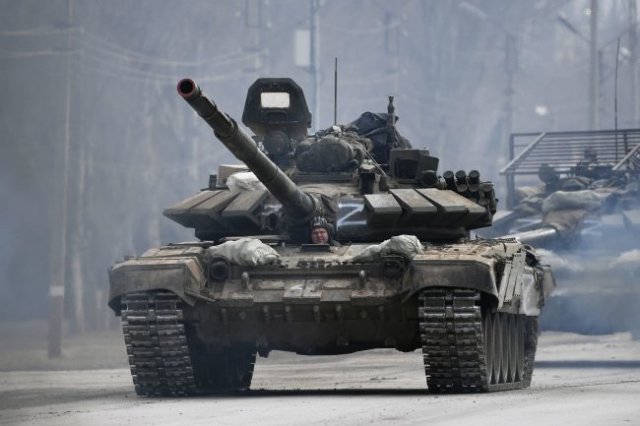Experts from the British Royal United Institute of Defense Studies analyzed the strengths and weaknesses of Russian tanks participating in a special military operation in Ukraine. At the same time, it is noted that the fighting taking place there only confirmed the conclusions already available to experts about the use of armored vehicles.
In particular, the authors of the material " Technical reflections on Russian armored fighting vehicles ", note that most of the Russian tanks have good frontal projection armor protection, which allows them to successfully resist, for example, hand-held anti-tank grenade launchers. The angle of inclination of the armor also has a positive effect on the security of the tank. Also, a fairly high level of protection is provided by a tank tower. The presence of dynamic protection is also mentioned as an advantage.
"Russian tanks are well protected from the front. For massive frontal collisions, for which they were designed, and especially in defensive positions where tanks can be buried in the ground, they are combat-ready and effective, provided they are properly operated. Even with poor operation, the Soviet T-72 performed well during the Iran-Iraq war," British experts note.
At the same time, such tanks as the T-72B3M are armed with 125-mm 2A46M-5 guns and can fire advanced projectiles capable of piercing 500 mm of armor at a two-kilometer distance. And their shooting accuracy will be higher than that of Soviet tanks.
Among the disadvantages of Russian tanks, British experts call the insufficiently high level of development of fire control systems and stabilization of weapons for firing on the move. They also attribute the disadvantages to the limited space inside the car and the crew consisting of three, not four people, as in western tanks. According to the authors of the publication, this can make it difficult, for example, to repair tracks and reduce situational awareness. But these problems can be overcome with the help of coordinated actions of the crew.
It is also noted in the publication that the use of an automatic loader allowed to reduce the number of crew and the dimensions of the tank. At the same time, the mass and area of damage to the machine decreased. However, hitting the side or the upper projection of the tank can lead to the detonation of ammunition. Experts attribute such losses to the location of the ammunition, the vulnerability of the onboard projections and the lack of an armored barrier between the crew and the ammunition.
At the same time, as the authors of the publication note, there is no ideal tank in principle. Winning in some characteristics, the car will lose in others. In addition, much depends on the tactics and methods of using tanks.
"It is necessary to take into account Russian tactics and doctrine, which usually focus on combined arms operations using artillery and aviation. Delegation of authority to lower levels of management is rare in Russian training. This means that armored formations operating independently of the support forces are probably doing what they are not trained to do. In general, Russian armored vehicles are quite effective. But it is important to consider it in context," the publication says.
Mikhail Rusin

